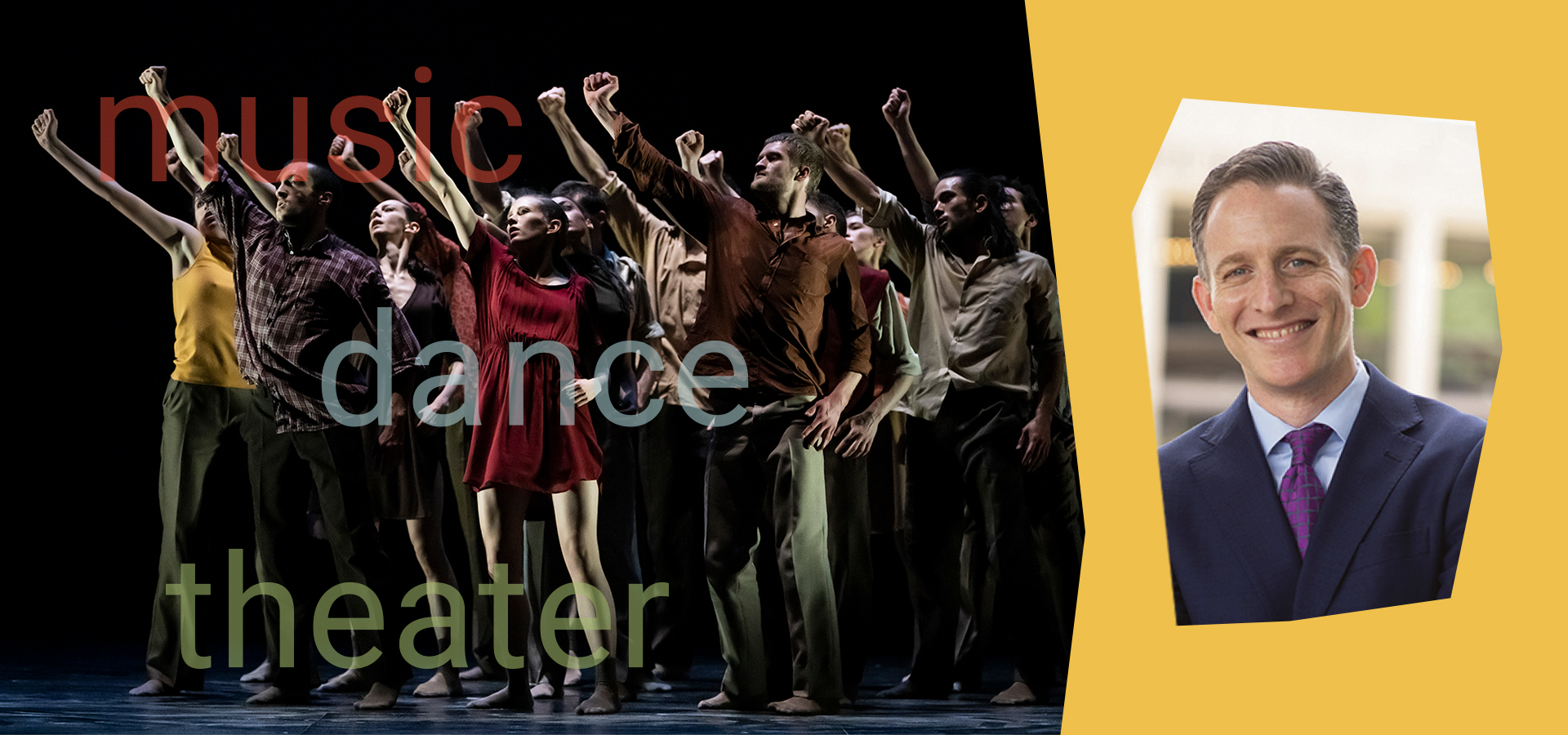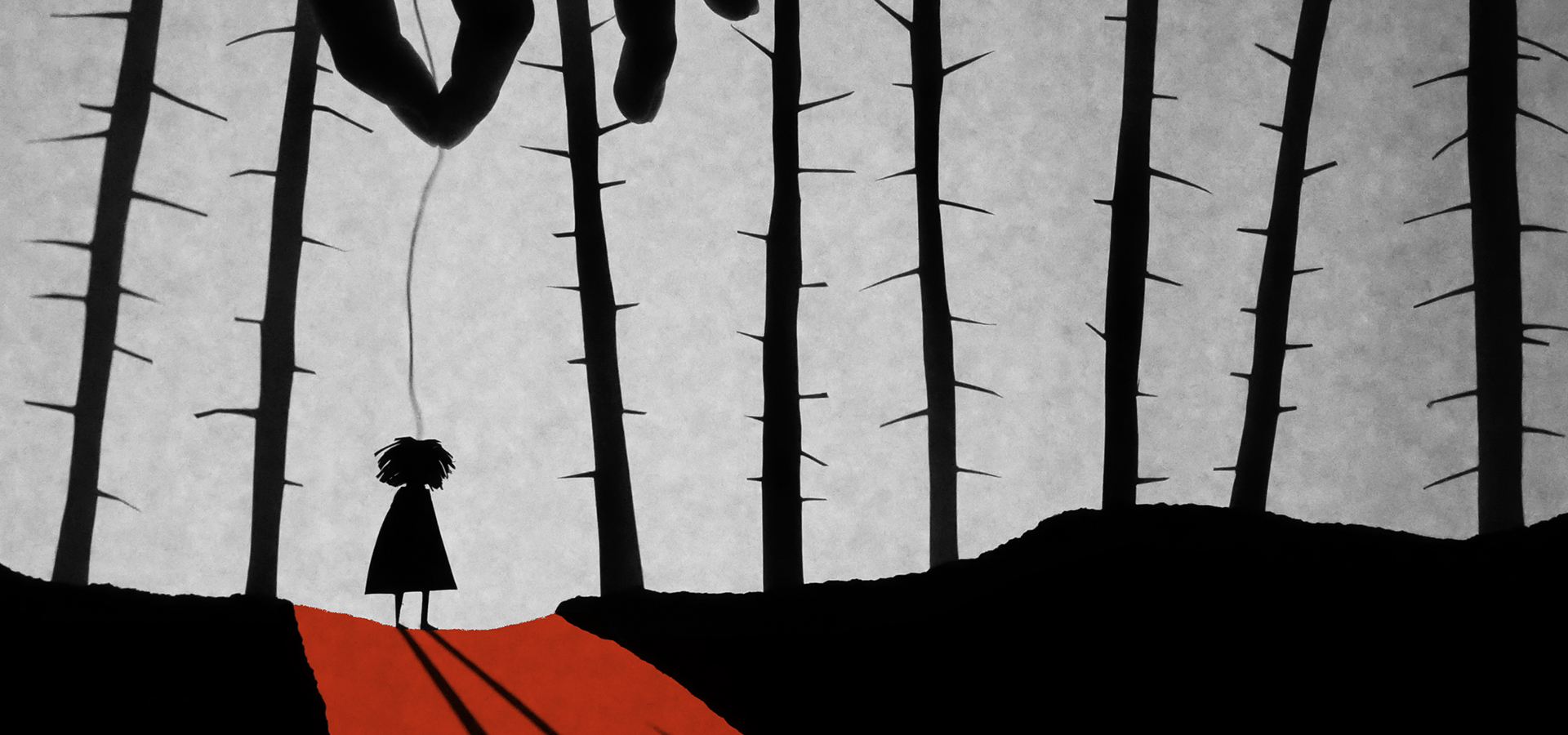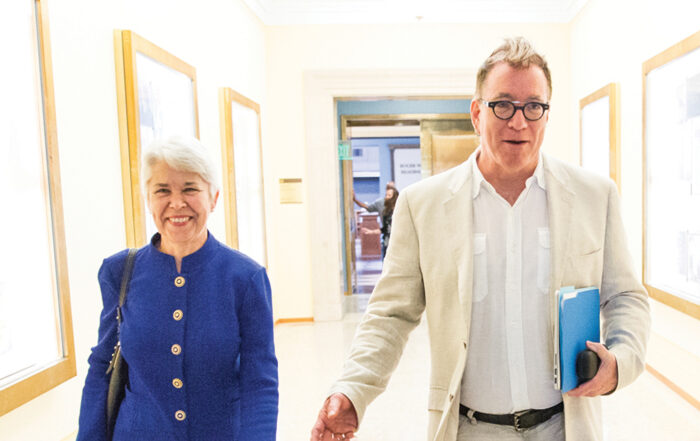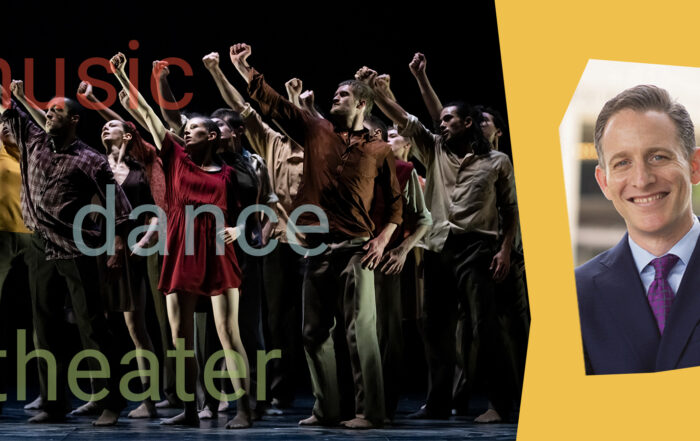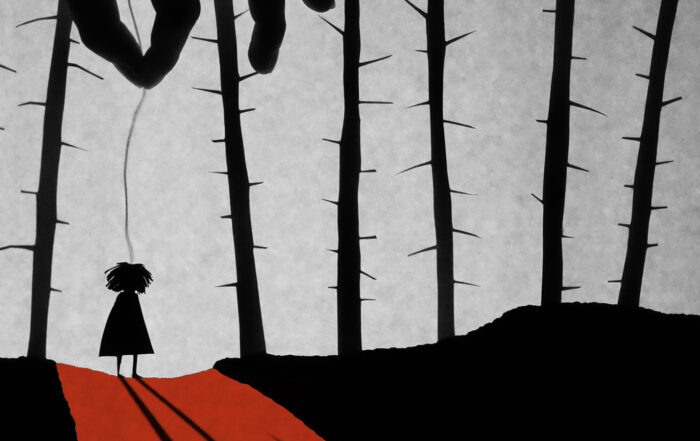In this article, Thomas May discusses the term Doppelgänger, how composers have used this theme over time, the upcoming Danish String Quartet concerts debuting the project of the same name, and more.

Seeing Double – The Doppelgänger Project
by Thomas May
Mir graust es, wenn ich sein Antlitz sehe—
Der Mond zeigt mir meine eigne Gestalt
(It horrifies me when I see his face
The moon reveals my own likeness)
These chilling words from one of the poems in Heinrich Heine’s Buch der Lieder of 1827 depict the uncanny moment of recognition in “Der Doppelgänger.” Franz Schubert set this text to music the following year—shortly before his death—as part of a collection that was published posthumously under the title Schwanengesang (“Swan Song”). Jeremy Geffen, executive and artistic director of Cal Performances, likens the song to “a Twilight Zone episode in four minutes.”
Heine actually left this poem untitled to intensify the degree of shock and surprise when the narrator realizes he is seeing his own Doppelgänger, whereas Schubert clues us in to the troubled emotional atmosphere with the ominous chord sequence heard at the outset. Here, already, is an example of the process of responding to and amending a source that we might call “doppelgänging,” in the spirit of the Danish String Quartet’s (DSQ) ambitious Doppelgänger project, an initiative that combines late chamber masterpieces by Schubert with new commissions by four contemporary composers. Cal Performances, which has joined the project as a co-commissioner, is presenting these four programs over the course three seasons.
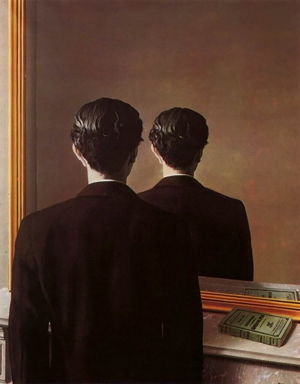
Not to Be Reproduced, 1937, by René Magritte
The fuzziness around the German word Doppelgänger is intentional. On the one hand, the term is used simply to refer to a harmless lookalike (a person who can even be sought out online via image recognition apps). But the mythic implications reach deep into the psyche, providing an obsessive trope for the Romantics (the coining of the German term is attributed to the novelist Jean Paul, later a favorite of Mahler). The notion of deceptively identical appearances that can disguise polarities opens up yet another dimension embedded within the concept. One of Schubert’s own friends described the composer as having “a double nature—inwardly a kind of poet and outwardly a kind of hedonist.”
“I think everybody has an idea of what a Doppelgänger is,” says DSQ violist Asbjørn Nørgaard. “It can be a very mystical term filled with images and history and philosophy, but it’s also something that is a very physical thing.” Similarly, through its commissioning of the four composers, the DSQ wanted to give ample leeway to each to interpret for themselves how to respond or react to the Schubert work with which they have been paired. “We’ve only created the framework and want to see some sort of inspiration going back and forth between the two. They might quote the Schubert piece or they might write something completely different. We don’t know how they will respond to the challenge.”
For example, Danish composer Bent Sørensen wrote his contribution, which launches Doppelgänger’s Berkeley concerts on October 10, as a counterpart to the vast expanse of the String Quartet in G major of 1826, Schubert’s final work in the genre. He incorporates Doppelgänger-like gestures into his new score—a product of the pandemic lockdowns—right down to the Schubertian title.
Later this season (April 29), Finnish composer Lotta Wennäkoski (born 1970), a student of Kaija Saariaho and the late Louis Andriessen, will present her new quartet responding to Schubert’s String Quartet in D minor from 1824, popularly known as Death and the Maiden. Next season brings Icelandic composer Anna Thorvaldsdottir’s commission juxtaposed with the A minor Quartet of 1824 (Rosamunde), and Thomas Adès will round out the series in 2023–24 with a piece that reacts to Schubert’s String Quintet in C major from 1828.
What was the criterion for choosing the commissioned composers? “It was very hard because on one side we wanted composers we like to work with, who have a musical language that we like; but we also wanted something new, something different,” observes Nørgaard. While the members of the DSQ have burnished their reputation as excitingly fresh and insightful interpreters of the classical canon, commissions for Doppelgänger offer a way to open up new horizons. “Each of the new pieces will be a challenge, because there’s going to be a different ‘language’ each time.”
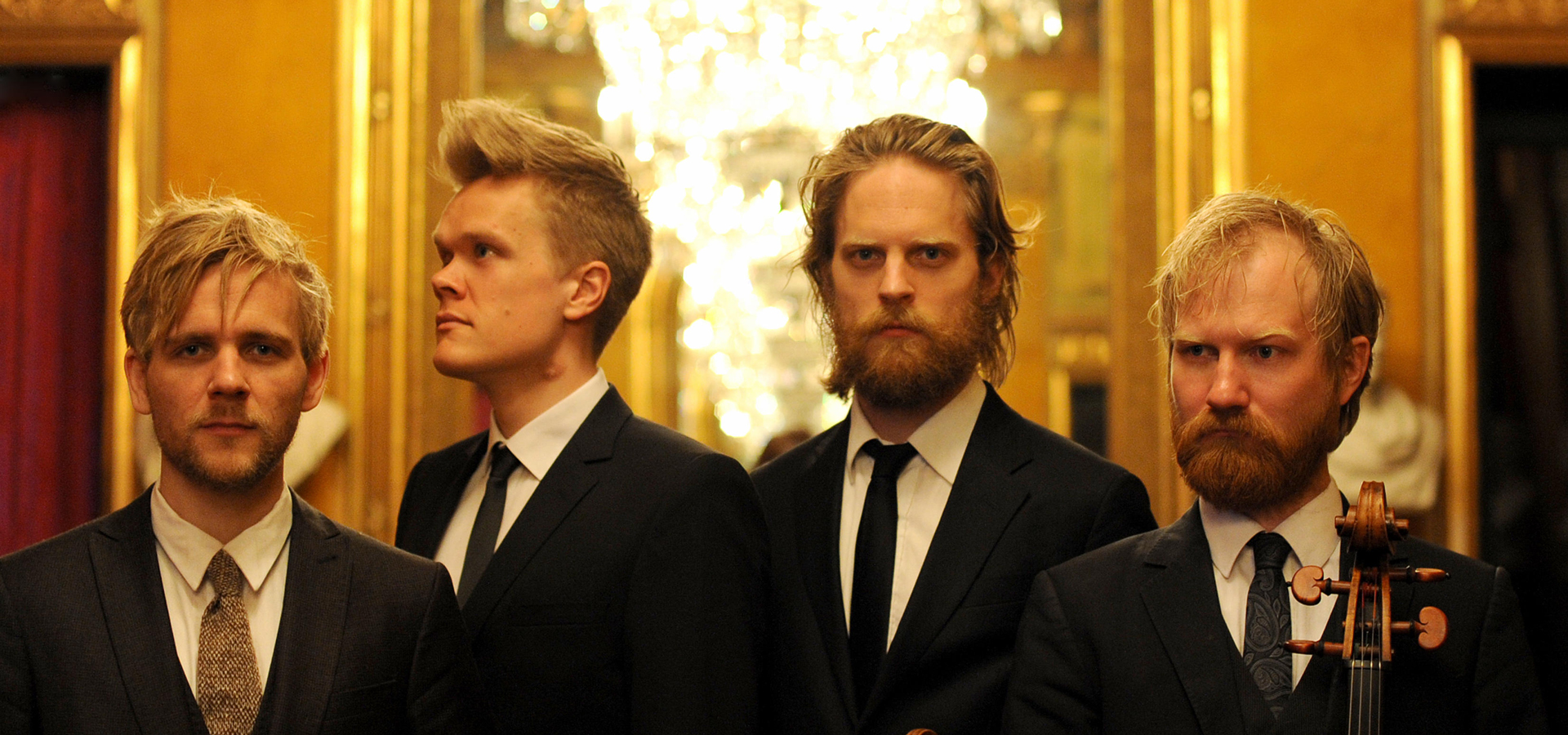
The Danish String Quartet
The DSQ’s new undertaking, Geffen explains, also resonates with an important aspect of the Cal Performances mission: “It is incumbent on any arts organization to move the repertoire forward, to create those works that in 50 years will be considered canonical. So this project very much aligns with Cal Performances, which has a history of taking risks in supporting new work. I appreciate so much the curiosity of our audience, as well as the fact that the DSQ are using their platform to lift up contemporary composers.”
Geffen adds: “Schubert, during his lifetime, heard relatively few of his works played and did not have the benefit of fame as a composer to launch performances. It is inconceivable—and humbling—that someone who died so young could have such a deep understanding of the complexities of the human experience.”
Thomas May is a writer, critic, educator, and translator. Along with essays regularly commissioned by the San Francisco Symphony, the Juilliard School, and other leading institutions, he contributes to the New York Times and Musical America and blogs about the arts at www.memeteria.com.

Not to Be Reproduced, 1937, by René Magritte
The fuzziness around the German word Doppelgänger is intentional. On the one hand, the term is used simply to refer to a harmless lookalike (a person who can even be sought out online via image recognition apps). But the mythic implications reach deep into the psyche, providing an obsessive trope for the Romantics (the coining of the German term is attributed to the novelist Jean Paul, later a favorite of Mahler). The notion of deceptively identical appearances that can disguise polarities opens up yet another dimension embedded within the concept. One of Schubert’s own friends described the composer as having “a double nature—inwardly a kind of poet and outwardly a kind of hedonist.”
“I think everybody has an idea of what a Doppelgänger is,” says DSQ violist Asbjørn Nørgaard. “It can be a very mystical term filled with images and history and philosophy, but it’s also something that is a very physical thing.” Similarly, through its commissioning of the four composers, the DSQ wanted to give ample leeway to each to interpret for themselves how to respond or react to the Schubert work with which they have been paired. “We’ve only created the framework and want to see some sort of inspiration going back and forth between the two. They might quote the Schubert piece or they might write something completely different. We don’t know how they will respond to the challenge.”
For example, Danish composer Bent Sørensen wrote his contribution, which launches Doppelgänger’s Berkeley concerts on October 10, as a counterpart to the vast expanse of the String Quartet in G major of 1826, Schubert’s final work in the genre. He incorporates Doppelgänger-like gestures into his new score—a product of the pandemic lockdowns—right down to the Schubertian title.
Later this season (April 29), Finnish composer Lotta Wennäkoski (born 1970), a student of Kaija Saariaho and the late Louis Andriessen, will present her new quartet responding to Schubert’s String Quartet in D minor from 1824, popularly known as Death and the Maiden. Next season brings Icelandic composer Anna Thorvaldsdottir’s commission juxtaposed with the A minor Quartet of 1824 (Rosamunde), and Thomas Adès will round out the series in 2023–24 with a piece that reacts to Schubert’s String Quintet in C major from 1828.
What was the criterion for choosing the commissioned composers? “It was very hard because on one side we wanted composers we like to work with, who have a musical language that we like; but we also wanted something new, something different,” observes Nørgaard. While the members of the DSQ have burnished their reputation as excitingly fresh and insightful interpreters of the classical canon, commissions for Doppelgänger offer a way to open up new horizons. “Each of the new pieces will be a challenge, because there’s going to be a different ‘language’ each time.”

The Danish String Quartet
The DSQ’s new undertaking, Geffen explains, also resonates with an important aspect of the Cal Performances mission: “It is incumbent on any arts organization to move the repertoire forward, to create those works that in 50 years will be considered canonical. So this project very much aligns with Cal Performances, which has a history of taking risks in supporting new work. I appreciate so much the curiosity of our audience, as well as the fact that the DSQ are using their platform to lift up contemporary composers.”
Geffen adds: “Schubert, during his lifetime, heard relatively few of his works played and did not have the benefit of fame as a composer to launch performances. It is inconceivable—and humbling—that someone who died so young could have such a deep understanding of the complexities of the human experience.”
Thomas May is a writer, critic, educator, and translator. Along with essays regularly commissioned by the San Francisco Symphony, the Juilliard School, and other leading institutions, he contributes to the New York Times and Musical America and blogs about the arts at www.memeteria.com.


